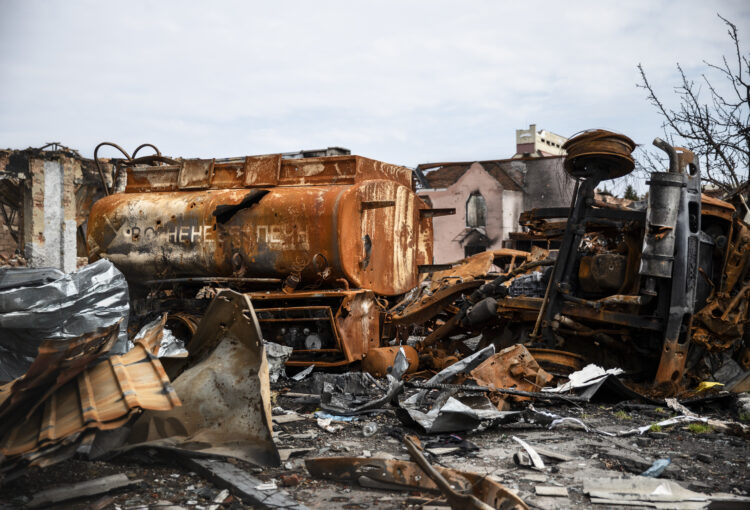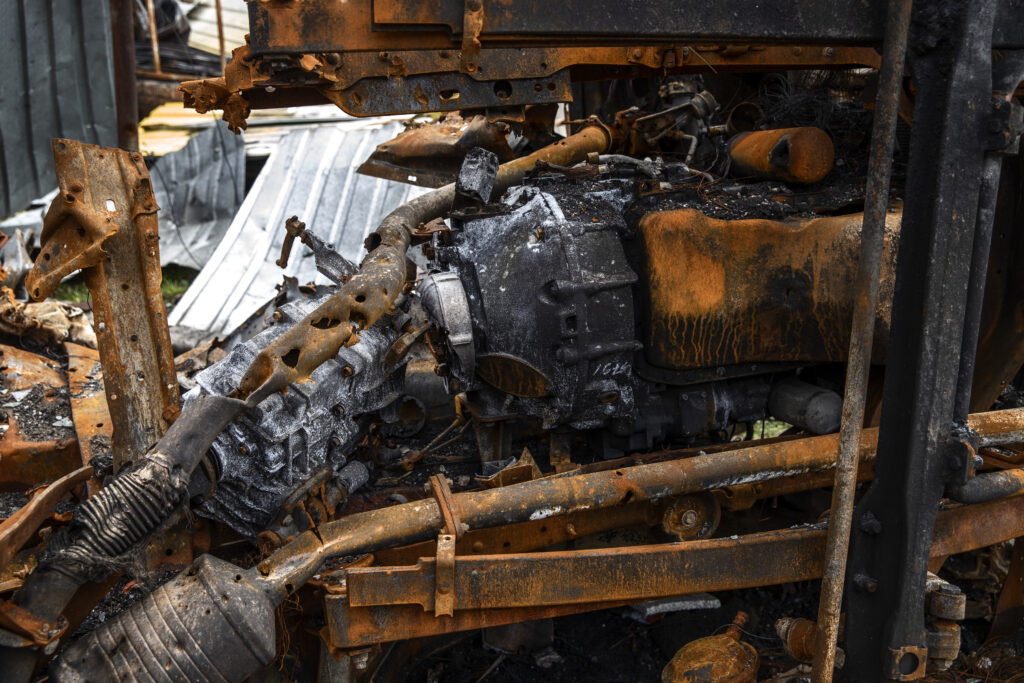The wheels may be the second biggest problem in terms of the cause of Big rig Truck Accident the accident. Wheel failure may be due to manufacturing defects, excessive increase, and atmospheric pressure or road hazards. Failure of only one of the 18 wheels of a seedling can have serious consequences. The failure of a Lenkachsreifens can result in a total loss of control of the vehicle, especially on older trucks without power steering.
If one of the wheels of a double-wheel drive axle or trailer breaks down, the other wheels should do more work and bring more weight. This means that adjacent wheels on the axle are more likely to warm up and fail, creating a situation of axle axle failure. However, it is likely that this will not go away. Most likely, one of the tires will be caught in the fire or the vehicle will be turned around – two situations that should be obvious to the driver.
Contrary to popular belief, looking behind axle steering axles is not illegal, even though they are prohibited in bus steering axles. New truck wheels are expensive and the industry often draws conclusions. The reliability of the abstracts is sometimes questioned, but the industry summary vigorously defends its practices and technologies, and we know of no data indicating any particular problem in the abstracts. Some investigators incorrectly assumed that a reclaimed tire was a heading error. However, to get closer, there should be no tire bead in the defective section.
Since the trucks can be 8½ ‘wide and the tracks generally do not exceed 12’, the possibility of breaking the track for a large platform is greater than for a light vehicle, which is generally not wider than 7 is closer. The lower error rate makes steering and forward alignment more important for trucks than for smaller vehicles. If a truck rolls straight or not depends solely on the orientation of the front axle, the adjustment of the wheel mainly consists of the pressure and load of the tire (weight distribution) and possibly the type of tire or the tire. sculpture.
Unfortunately, a lot of information about the relevant components may be lost if the truck encounters something and the front is damaged. However, in all cases involving a track violation and a large platform, the conservation records and the driver’s reports should be checked for clues of directed problems. The importance of power train problems for the cause of Big rig Truck accidents is often noticeable.
Large trucks have a very low weight / power ratio compared to vehicle lights. The biggest engine currently available will take about 600 hp. The average for the installed park is probably less than 400 hp. The four hundred horsepower of a 80,000-pound vehicle equates to 20 horses in a 4,000-horsepower car like a van. This means that, at best, trucks cannot stand up to speed up or get lost. Poor engine performance or transmission that is difficult to change gear can aggravate vehicle problems and cause accidents that are difficult to identify and neglect.
Many large platforms have a blind spot on the right side where smaller vehicles are not visible to the truck driver. Cab over short-edge models, which are rarer, also have a blind spot in front of the truck, which can reach several feet depending on the height of the pedestrians or the obstacle in front of the platform. The right place reaches the front of the right side and returns to the right side of the door. A special side on the right side or a cutout on the right side is needed to eliminate the blind spot.
However, opening the door of the “sun” can easily be covered with taxis. In addition, in the past, doors and mirrors in daylight are optional options; The trucks arrived without them, unless they were specially arranged. In some cases, delete options can be selected and can be removed to obtain credit. In our opinion, the same situation involves design flaws in the affected vehicles, which could lead to serious incidents that may require the assistance of a truck accident lawyer.
There seems to be a constant lack of truck drivers. So there are always serious or dangerous problems. Some other handling problems that only occur on large gear are particularly noticeable here. It’s all about the braking problems that modern anti-lock braking systems (ABS) can remedy or eliminate braking problems, but that still occur in most vehicles with difficult working conditions. Tractors can crack when the brakes are blocked. The swinging of the trailer is a similar phenomenon that may or may not be identical for an untrained eye.
If the wheels of the trailer are blocked while the tractor wheels are not locked, the trailers can swirl close to the roads, which affect the traffic on these trails. If the tractor is not equipped with a trailer, driving the axle axle at the rear of the tractor can easily lock and remove the tractor and drive it out of the skid. Although it is possible to prevent the rear wheels with any vehicle without ABS, a semi bobtail is more likely because the brakes are designed for high weight drive axles. Without this, the brakes lock very easily.

Any load that can be moved is a problem and can move all loads. In fact, the load – here the weight associated with the load – should be at least included in the operating parameters of the operating range when the vehicle is shaken, shaken or struck while driving. This means that the load is not under the influence of forward accelerations of the order of 0.1 g to 0.2 g (1 g = weight of the vehicle), lateral forces of about 0.6 g and succession braking forces.
However, it is during and after the travel interval; This is not a static norm. The cargo falters; it does not break for most. Freight can be problematic, not only because it can fall on the road or other vehicles, but also because it tends to create control problems for the vehicles involved. In particular, it tends to move to a lateral movement. Load transfer means that weight transfer and weight transfer in a moving vehicle is not good.
A problem here is that even though most goods are safe enough, others are not safe. Some loads need to be moved: concrete in a mixer truck. Some loads may want to be moved: cattle in a manger. And some charges should be able to circulate: liquids in a tanker. Cement cars can be dangerous when “mud becomes high”, ie when the concrete begins to stick to the rotating drum. Livestock platforms are thought to be more dangerous than they actually are, when the animals are actually beaten and cannot move much
Tankers are the biggest problem here. When filling a tank truck, it is often necessary to leave a room to allow the expansion of the contents during the work. However, before heating, there is an empty space in the tank where the contents can be moved. This is especially important when the car is in a corner.
Fluids can affect the stability of the vehicle. Although most tankers eat inside a lunch that limits the restoration of the contents, there is usually no lunch that limits the movement from one side to the other and side action can cause a reversal. Understanding the steps to take after a truck accident is crucial, as this problem is due to partially filled tankers, z. For example, tankers are still full, but some of their original shipments are now dumped.
Truck accidents are unique in many ways. Examination lawyers may be particularly interested in the fact that truck accidents are accidentally without personal injury and may cause property damage other than road accidents. In 2004, the average amount of compensation claims for heavy trucks was $ 66,000. In general, even large devices are not summarized. Currently rigging, d. H. Tractor plus trailer or “truck” (no trailer such as a dump truck or other “professional” truck) is generally greater than $ 100,000.
A Big rig Truck accident can cause serious damage to materials, to the environment, for example. For example, the fuel tank tank 150 gallons, or even the damage caused by the highway, when a large platform takes a ceiling shield or crashes, and the middle band. Accidents with heavy superstructures can give rise to complex damage assessments and greater liability than normal car accidents.
Bodily injury claims involving heavy trucks are likely to cause more damage than those associated with similar vehicle accidents. Large construction machines are difficult to beat or damage due to their heavy weight and lack of protection for bumpers and sub-frames for the sides and rear of the truck. Potential damage to large platforms is designed for and affects drivers and other vehicles. The injuries suffered by the big operators themselves are an often overlooked aspect of the Big rig Truck accident.
Most fatal injuries caused by heavy trucks occur during rollovers and bad driving cabs. And, only in the event of a car accident, most injury mechanisms include entrapment or positional suffocation. There is no federal requirement for the structural integrity of the truck cab that will always fail when it hits the ground. The result is that drivers are stuck under the weight of the cab and can not breathe or escape fire or other hazards. Then remember that recovery options are not necessarily tired of workers’ claims when a driver dies or gets injured.
If a Big rig Truck accident is caused by a mechanical problem, the problem is probably due to the braking system. All heavy trucks use air brakes. High pressure drives the brakes. The “overload” you hear at the big car light in front of you occurs when the brakes are released and not when they touch. Compressed air braking systems are complex, poorly maintained and more efficient than the hydraulic braking systems used in light vehicles. The system includes a mounted air compressor, multiple tanks, multiple lines and valves, and actuators on each wheel. Most importantly, the almost universal “S” cam drum brake now has essential adjustment requirements for optimum braking.
CONCLUSIONS
Heavy A Big rig Truck accidents can be a challenge. They need special knowledge and a diligent inquiry to assess accountability issues. This article deals with issues of general interest and does not provide specific legal, medical or commercial advice in certain circumstances. Before responding to any of this information, seek the advice of a lawyer or other qualified professional.
This article may not be copied, modified, shared, concealed, incorporated into any other document or website, or otherwise modified without permission of the author, to contact TASA. Big rig Truck accident, on a cam brake, the air pressure moves to a diaphragm pressing a rod, causing a rotating lever on the cam to push the friction linings onto the rotating drum to make a deductive effort.
Attaching the lever is essential so that the diaphragm and stem can only be moved now (about 3 inches). If this movement does not push the drum effectively, the proper braking unit will not work when it will work. Braking adjustments are made using a 9/16 “wrench and pull rod under the truck, which can be difficult, sometimes it does not work properly or usually not enough.
The poorly adjusted brakes will not stop closing as quickly as the brakes are tight as they will not work or will not work vigorously if necessary to slow down the platform. The big trucks are still not maintained. Fully charged, they last almost twice as long as light vehicles. Further reduction of braking force can have serious consequences in emergency situations. However, the main problem of poorly configured brakes is braking. Brake braking, a heat issue, can be difficult to stop for 80,000 vehicles. The driver has adjusted the air pressure, the pressure.
REFERENCES
* Navarro, Alex (January 14, 2004). “Big Rigs: Over the Road Racing Review”. GameSpot.
*Carlson, Alex (January 2, 2014). “How the Worst Game of 2013 Is Actually Better Than Big
Rigs”. Hardcore Gamer. Retrieved.
* Haske, Steve (September 27, 2011). “The Most Abysmal Racing Games Ever”. GameZone.
* McLean, Owen (April 12, 2012). “Why It’s Okay That GoldenEye
Totally Sucks”. Kotaku.
*Houghton, David (September 6, 2011). “Good glitches, bad glitches, and why patches are really
the gamer’s enemy”. GamesRadar, Garamoth (April 30, 2009). “Big Rigs: Over the Road Racing –
Windows. Hardcore Gaming 101. Retrieved September 10, 2017.
* Schreier, Jason . “The War Z Mess: Every Crazy Detail We Know So Far UPDATE”.
Kotaku.




